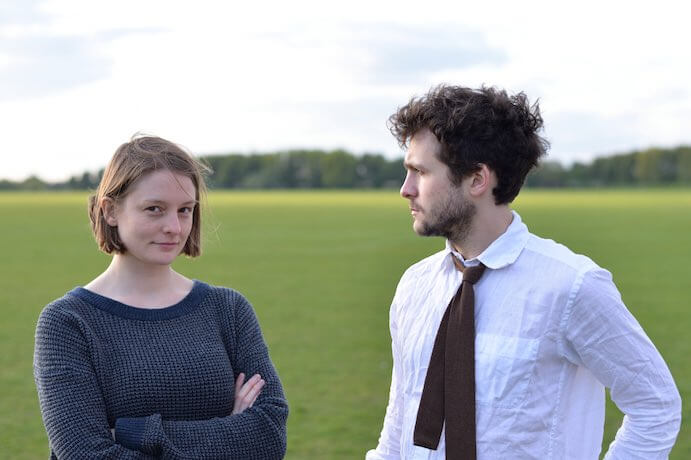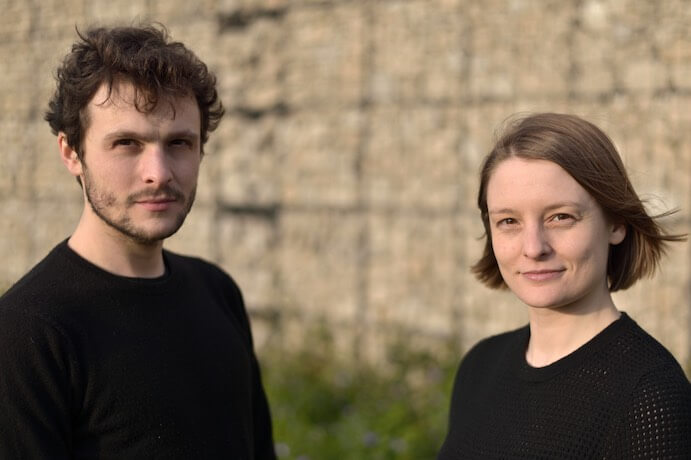Like many of the London universities and conservatoires, City, University of London run a concert series open to the general public featuring guest performers as well as staff and students. Their series is a welcome addition to the London scene as its prime focus is contemporary and new music. On 3 December 2019, they hosted guest performers the GBSR Duo: percussionist George Barton and pianist Siwan Rhys. They are an unassuming pair, dressed in black, who neither provided programme notes nor introduced the pieces: they let the music do all the talking. Recently, they played the Huddersfield Contemporary Music Festival and released their recording of Stockhausen’s Kontakte, the signature 20th-century work for piano, percussion, and electronics, which they play from memory. The longer Feldman works are also part of their repertoire, and while he was not on the 3 December programme, Morton Feldman–or rather ‘Morty’, as in the title of Christian Wolff’s piece–was a significant background presence in the first half.
Wolff’s For Morty (1987) was written as a tribute to Feldman, who died in September that year: it is around five minutes long and with chiming treble sonorities that evoke Feldman works such as Why Patterns. But Wolff’s piece is generally faster and with a good deal more attack in the sonority than is typical of Feldman, though a couple of times the texture was unnervingly pared back to almost nothing.

GBSR Duo–Photo by Dejan Mrdja
Feldman’s widow and former pupil Barbara Monk Feldman was represented with her Duo (1988), both Barton and Rhys completely inhabiting the sound world and exhibiting ideal precision. Switching on the vibraphone motor was a significant sound event in this hushed work, and the duo perfectly controlled the striking conclusion, chimes and upward piano gestures that were suddenly cut off, as indeed was Feldman’s life. I don’t think I’ve heard Monk Feldman’s music live in London before, and I’d love to hear the GBSR duo team up with a violinist for her work The Northern Shore.
Jo Kondo’s Aquarelle (1990) suspended time through a limited range of quiet chords. Kondo spent a year in New York in 1978, where he met Feldman and Cage, and this piece shows how much both composers marked his musical language. Far from a watercolour (aquarelle), this came over as a study in metalwork, Rhys’s piano seemingly turning into a metallophone in dialogue with resonant percussion. A concluding thin gong strike was the delicate yet decisive marker of the end of the first half.
Three pieces by young British composers formed the second half, when the duo was joined by Nicholas Moroz controlling the sound design. Finally, it was obvious why the stage set included drum pads, a synthesiser, and a spaghetti tangle of cable alongside the percussion instruments. The world premiere on the programme was so smol by CHAINES (the Manchester-based composer and performer Cee Haines). I came across their music in the 2018 Proms season, which featured their Knockturning, starting with in-your-face organ sounds: the composer’s aim in this work was to ‘blast the dust off cathedral windows.’ so smol wasn’t as overwhelming, though after a first half of delicate sonorities, the combination of synthesised distortion and drumpads triggering samples made a big impact. It was funky and skewed, rarely allowing the listener to settle into one rhythm, and even the deadpan Rhys cracked a smile at one of the samples which sounded like an electronic dog swallowing something. Fading away on a regular pulsation, its arresting ending was two widely spaced, distorted cries. It was captivating–and if you enjoy contemporary music that lives half in the concert hall, half in a nightclub, you’ll love CHAINES.

CHAINES–Photo courtesy www.shapeplatform.eu
Oliver Sellwood’s Alias States for piano, electronic drum kit, and sound design initially came over as rhythmically unadventurous compared to CHAINES’ work. But it built up considerably towards a crazy drum solo that was the first truly loud moment of the evening, and it turned into a great vehicle for showing off the virtuosity of the GBSR duo. Spiky piano treble sonorities rubbed up against ‘cymbal’ rolls triggering samples and a descending electronic wall of sound, the performers inhabiting more divergent sound worlds by the end of the piece.
The most striking of the new works was Nicholas Moroz’s Intralatent, recently premiered at Huddersfield. As Rhys prepared the piano, placing objects on the strings, recorded sound started; had the piece begun? Barton’s virtuoso bongo entrance marked another possible opening of a piece that was a real celebration of sonority. The piano preparation brought out unsuspected harmonics, enhanced by an electronic halo, and the confrontation between the human, earthy world of the bongos and the distorted, ethereal piano was scintillating. Moving towards the second section, Barton played claves as he approached his second percussion station with singing bowls, a small nipple gong, thundersheet, and a dangling collection of wooden objects that Moroz dubbed a ‘noise tree.’ Striking, stroking, and beating metal, clasping and unclasping the noise tree, Barton engaged fully with this most tactile of pieces. Moroz’s sheer love of sound was the abiding memory of the piece, which apparently is to have a third movement. I’m already looking forward to revisiting this immersive soundworld.
When composing his Violin Sonata in the mid-1920s, Maurice Ravel said the violin and piano were ‘two essentially incompatible instruments.’ He had a point, though the extensive repertoire for violin and piano duo suggests many composers do not agree. But it seems to me that the essentially percussive piano is far better matched to other percussion instruments. In the GBSR Duo, this instrumental combination has persuasive champions who are already commissioning exciting new repertoire. Their quiet stage presence is perfect for Feldman and his contemporaries, and for the second half, they came out of their shells.




















